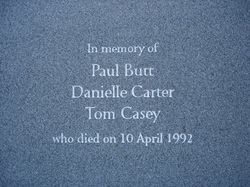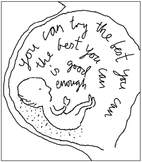
Our lives unfold in the post 9/11 era. We are forever told that the tragic events of a decade ago changed the world. The origins of our troubles are rooted in that historical moment. How much more tranquil, peaceful and certain things must have been prior to the autumn of 2001.
This blog posting, ten years to the day since 9/11 is a modest attempt to challenge this pervasive myth. It seeks to memorialise the victims of terrorism, and to prompt us to remember that wars on terror and wars of terror began long, long before the destruction of the World Trade Center.
At the same time as these two towers came tumbling down, another was in the process of being constructed. This is the so-called "Gherkin" in the City of London. Norman Foster's iconic silhouette on the skyline of Britain's capital is only where it is thanks to an act of creative iconoclasm. For at 9:20pm on Friday 10th April 1992 the Irish Republican Army (IRA) detonated a bomb on St. Mary Axe, just outside the Baltic Exchange. This Grade II*, early 20th century building was so badly damaged that it was removed - thus allowing Foster's skyscraper to take its place.
Of far greater significance to this loss of architectural heritage was the loss of three innocent lives. They were Paul Butt, aged 29 and a securities dealer; Thomas Casey, a 49-year-old doorman at the Baltic Exchange; and Danielle Carter, a 15-year-old schoolgirl.
Their names appear on a wall at the foot of the skyscraper. The memorial stone reads:
In memory of
Paul Butt
Danielle Carter
Tom Casey
who died on 10 April 1992
The inscription thus forgets far more than it remembers. How many of the passers-by who notice this bland statement of facts are able to decipher its meaning? We are told that three people died - but not where, how or with what consequences. The bloody background to the weirdly shaped building towering overhead remains unspoken and ignored.
Terrorism exploded on the mainland of the United States exactly ten years ago. And the world changed. But we should not allow the tenth anniversary to inspire nostalgia for the lost innocence of our pre-9/11 world. Each time we glance up at the "Gherkin" we should remember the bomb that brought death and terror to the streets of London all those years ago. And we would do well to reflect on the fact that one of the ambulance workers who arrived at the scene of the Baltic Exchange bombing never recovered from his experience. He shot his girlfriend five months later and tried to commit suicide. He is now in a secure psychiatric unit (Burch 2008: 470, note 6).
So, yes, the world probably did change on 11th September 2001 - just not that much, unfortunately.
________
Reference
Burch, Stuart (2008) "An Unfolding Signifier: London's Baltic Exchange in Tallinn", Journal of Baltic Studies,
Vol. 39 (4), pp. 451-473





